It was late last year that I received a message from Nigel, a fellow photo friend saying, “Your daughter-in-law is a better photographer than you are!” What did I do? I just smiled wryly. And what does this have to do with a day on the water? Hang in, it will be revealed.
Every year, whales migrate north along the eastern coast of Australia to warmer tropical waters. After a winter in the waters off northern Australia, they then return to summer in Antarctica. With greater protection of whale populations, their numbers have markedly risen, and along with came a thriving whale-watching tourism sector.
Last month that my Better Half and I went out on our first whale-watching cruise. It started with a pleasant run along calm waters in Sydney Harbour, then out through the Heads and into open water. Out there, the fun began. A two-metre swell was running. Up then down, then same all over again, with sprays of saltwater over the boat each time the bow dipped and hit the next wave. I was on an outside deck with the Leica V Lux 114, but quickly put it inside my waterproof jacket to isolate it from the salt spray.
Click on images to expand and to view a slideshow of all images in the article
Tricky pic captures
We were with a company called Go Whale Watching. They are very experienced at knowing where to go to find whales, with some secret methods involved. So they were able to take us straight to a location a kilometre or three offshore (I can’t judge ocean distances), then cut the engines, and we waited only a minute or two before we saw our first whale.
Wow, those humpback whales really are huge. That afternoon they were involved in tail-throwing and slapping. I found photography really challenging. The problem wasn’t the Leica V Lux 114, it was the photographer. I had last used the camera at the Melbourne MotoGP races last year. That photography was easy, just set the focus on a corner then use burst mode to catch the bikes as they passed through. I soon learnt that whale photography is much tougher – you simply don’t know where the whales will next surface, slap their tails for a second or two, then head back under. You can’t prefocus and point because they never oblige. They’re out there having their own fun, not acting as photographer’s models.
I finally gave up on strong zoom and viewfinder, choosing instead to set a shorter focal length to cover an area of water, then shoot from the hip when a whale appeared.
Images from an Expert
Now it’s time for me to declare why I introduced this article with the comment about Rachelle, my daughter-in-law. In fact, she spends three days a week as an onboard photographer for the whale-watching company that we were with that day. Well, she was on the boat too. And yes, she is an infinitely better photographer than me.
She uses serious kit. A Canon 1Dx camera with a monster Canon 100-400mm f/4.5-5.6 lens bolted on the front. While I was on the upper deck of the boat so that I could sometimes see the whales in the water, she does her photography from the lower deck near water level in order to get a better perspective. And she doesn’t use autofocus, saying that it’s too slow and that she can manual focus faster with her top-end kit that she knows inside out.
Some days are better than others
Rachelle describes herself as a wildlife portrait photographer¹. Her images have been used worldwide in tourism advertising and the magazine industry, as well as syndicated newspapers (recent whale images in British newspapers were her shots from over here on this side of the world). Whales are favourite subjects for her, and she did tell us before our outing that while she can guarantee that we will see whales, there is no certainty how they will perform on a particular day. Too true, we only saw tail flaps ‘n slaps on the day that we were out there. But the next day was different for her with the whales breaching, and just now this weekend some weeks later she caught some brilliant shots.
Late afternoon, returning home.
After nearly three hours in open water, it was time to head back into Sydney harbour. Tourists started relaxing on the boat, while the serious photographers began editing their images in the cabin. So, for me it was back to the V Lux 114 and more relaxed photography, my comfort zone. Here are some images as we concluded a very different day for us terrestrial types.
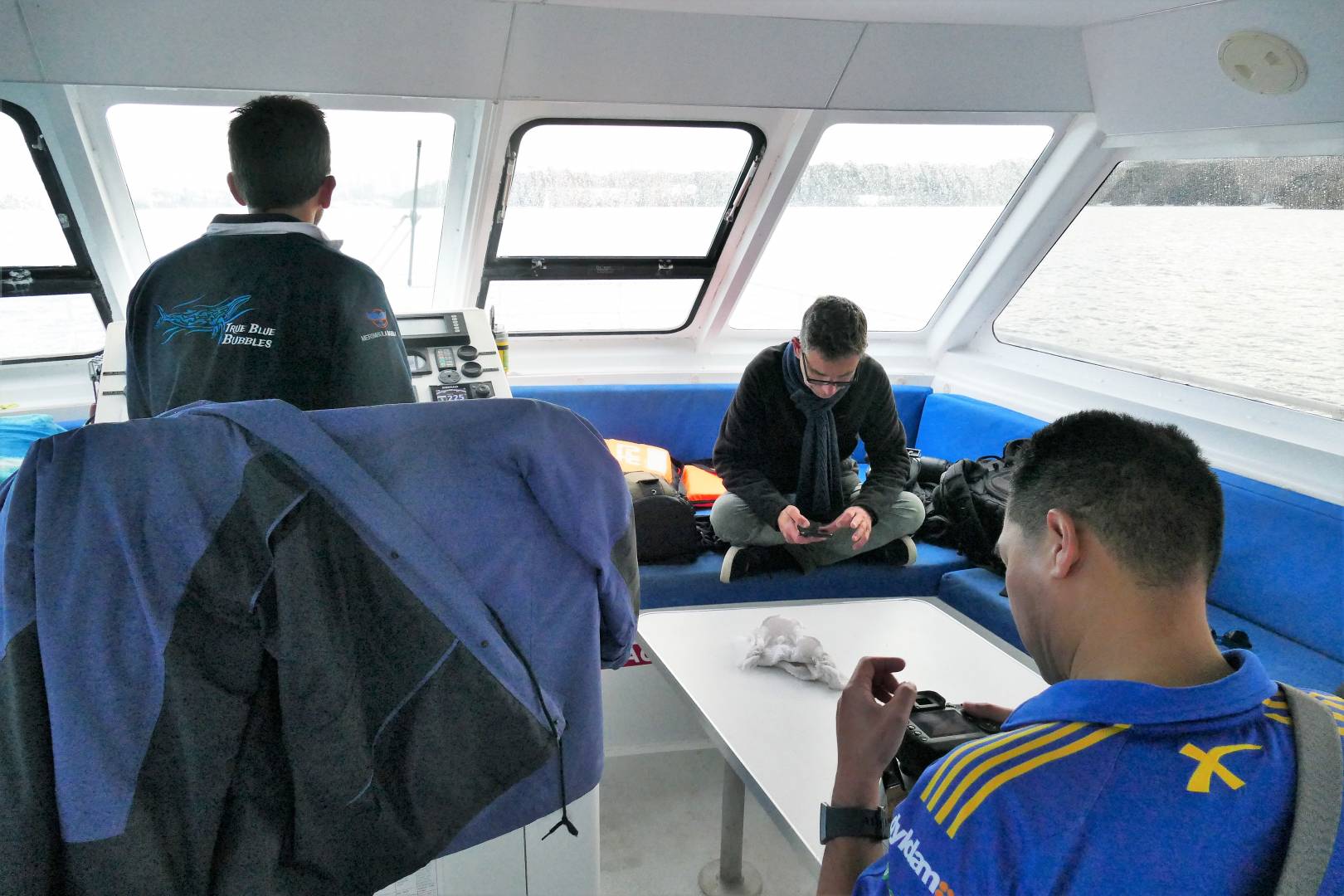
Inside the captain steered us back while photographers began downloading and editing 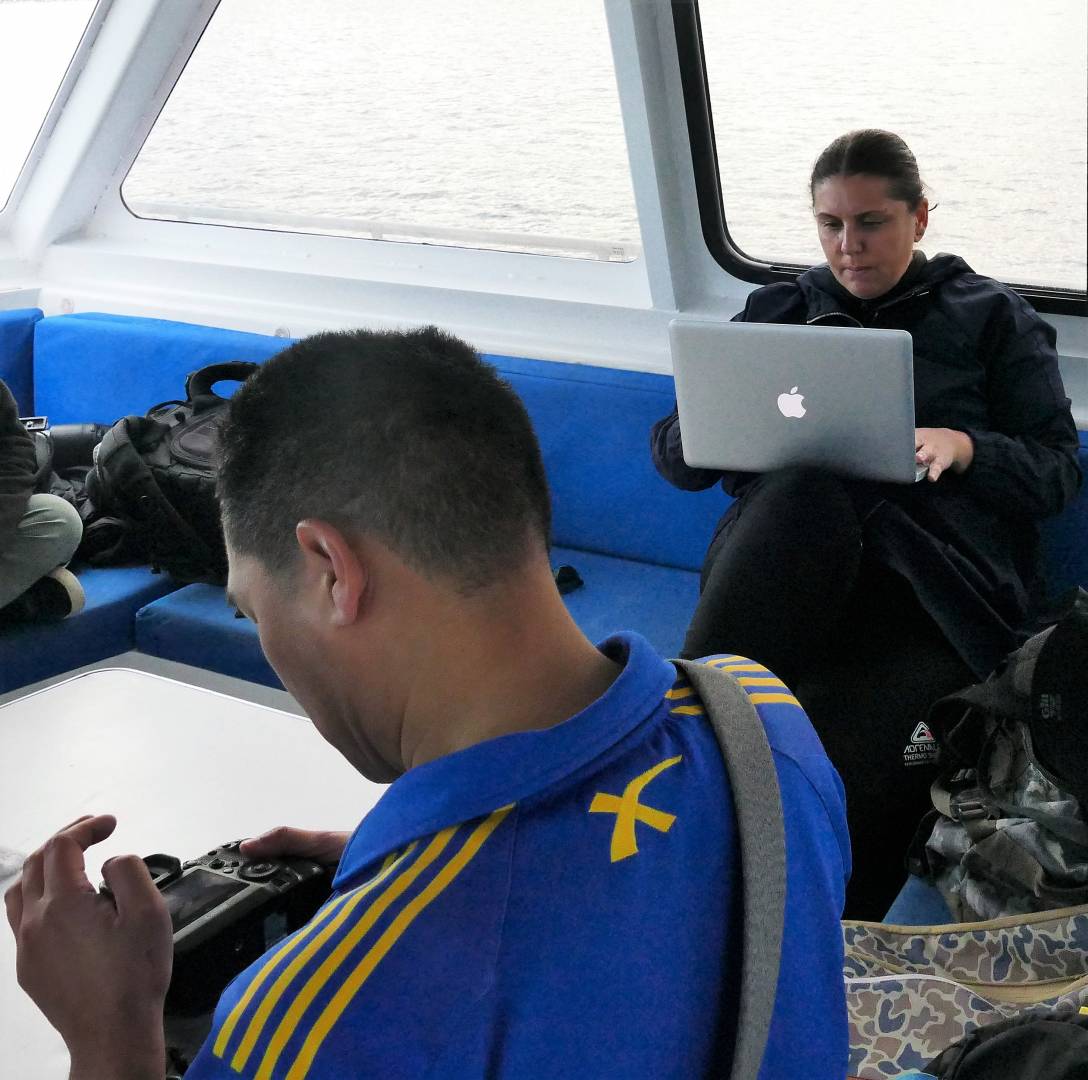
Some photographers were faster than others. Over at the side of the cabin Rachelle had already downloaded from camera, edited on board and was uploading to social media. She doesn’t remember the old days when you had to send off a film for developing
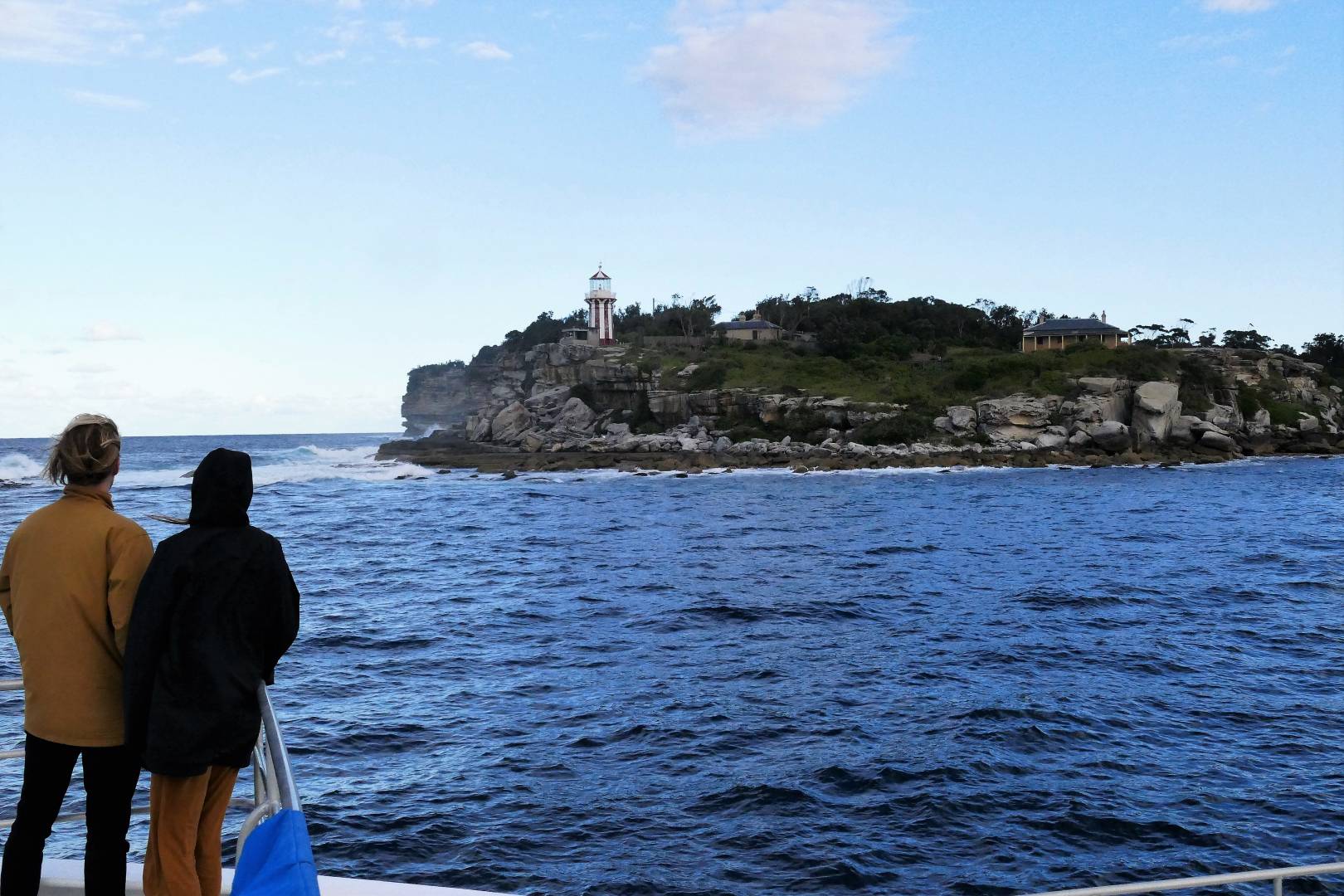
The light and the old lighthouse keeper’s cottage on South Head as we entered the Harbour 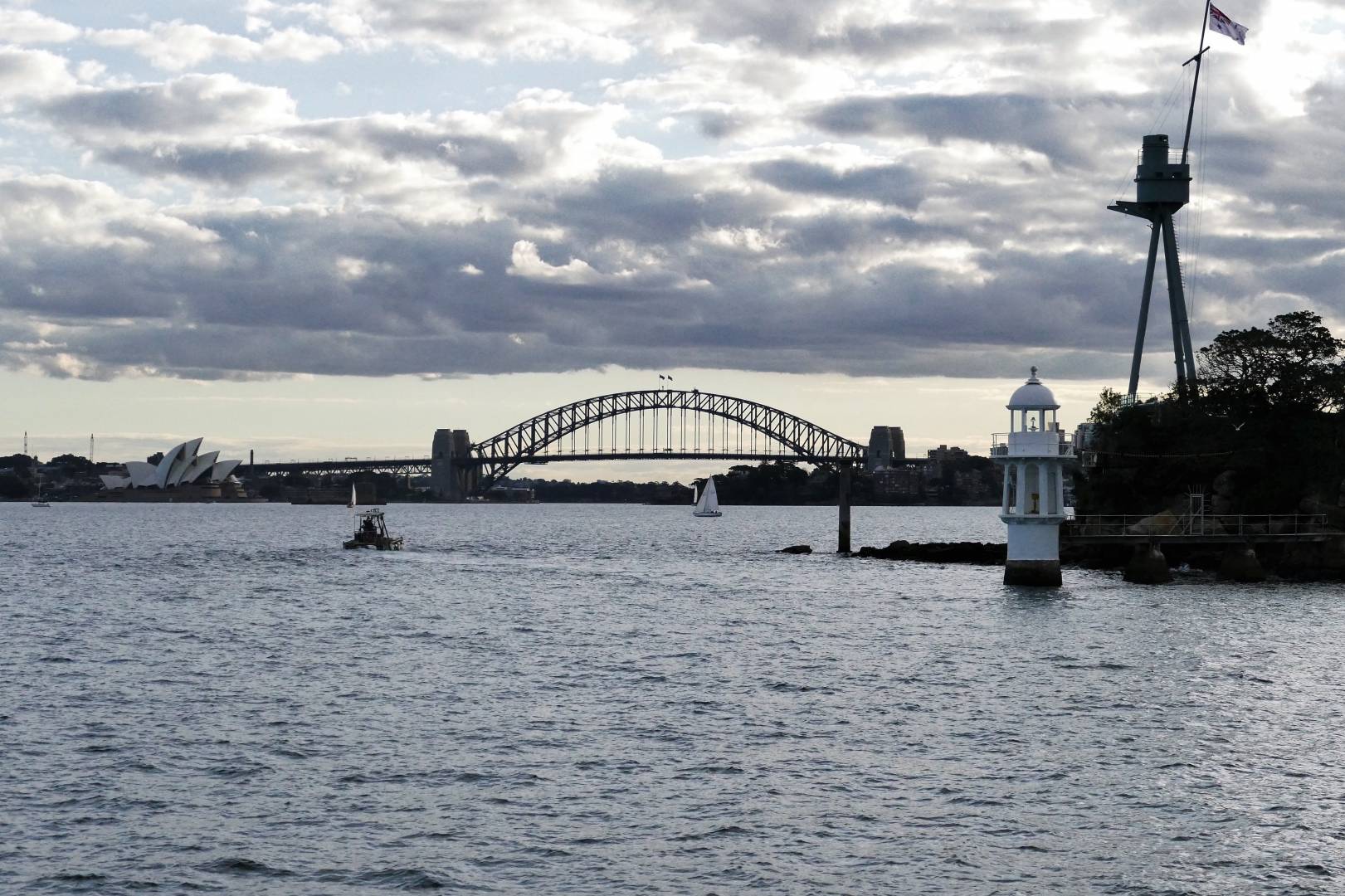
Inside the Harbour the city comes into sight 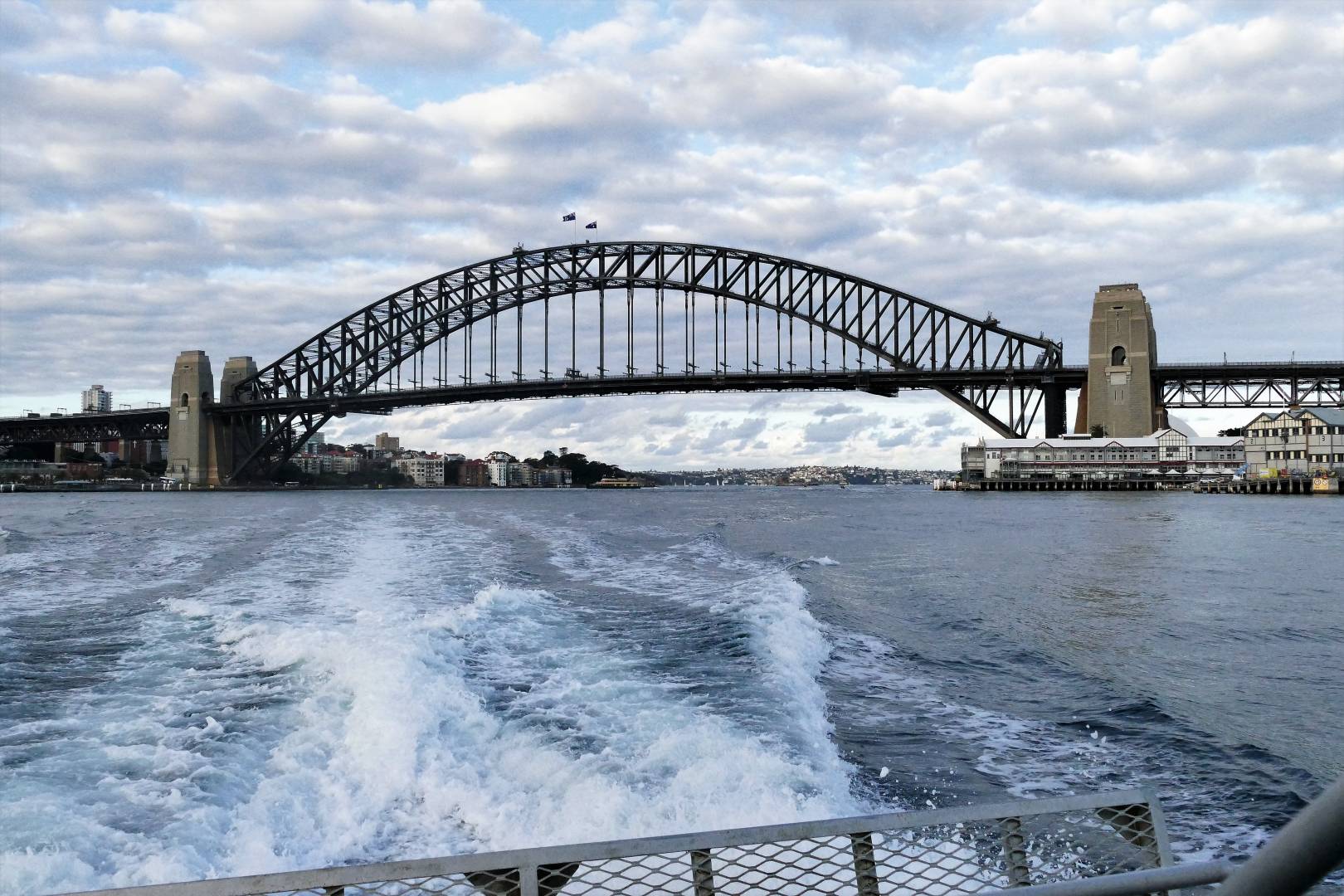
At speed back to the wharf. Late afternoon, very light traffic on the harbour 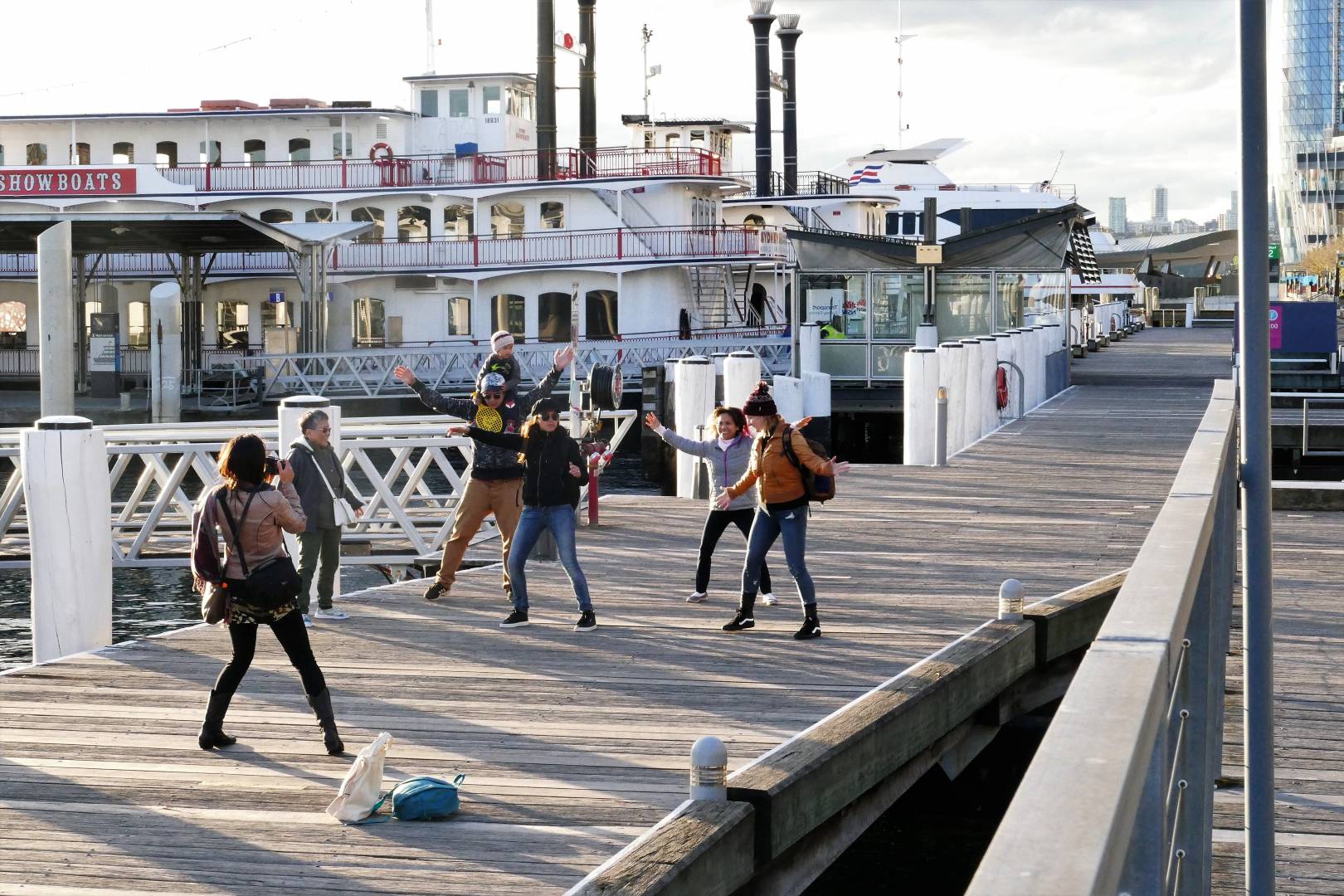
Back on terra firma, some of our fellow sailors busy downloading to Tik Tok or Facebook or whatever
Read more from Wayne Gerlach
- You can see more of Rachelle’s images at “Faunographic” on Instagram. Or her website Faunographic.com ↩

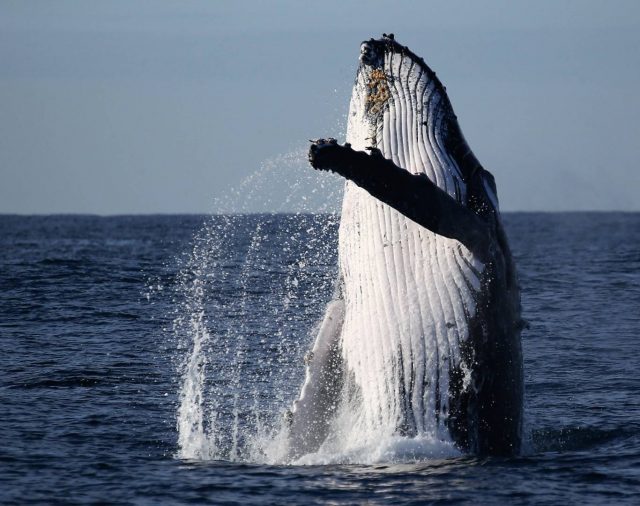
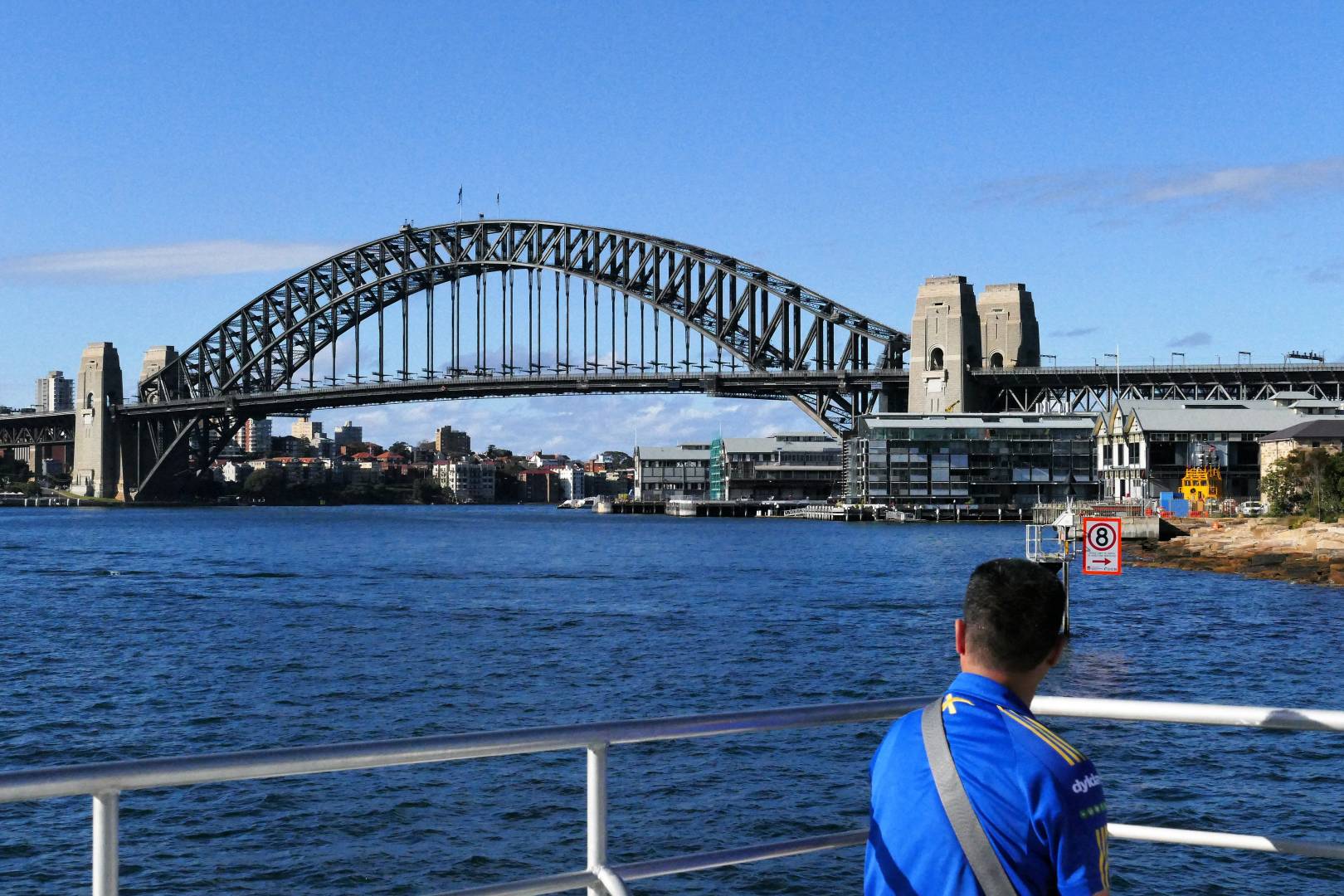
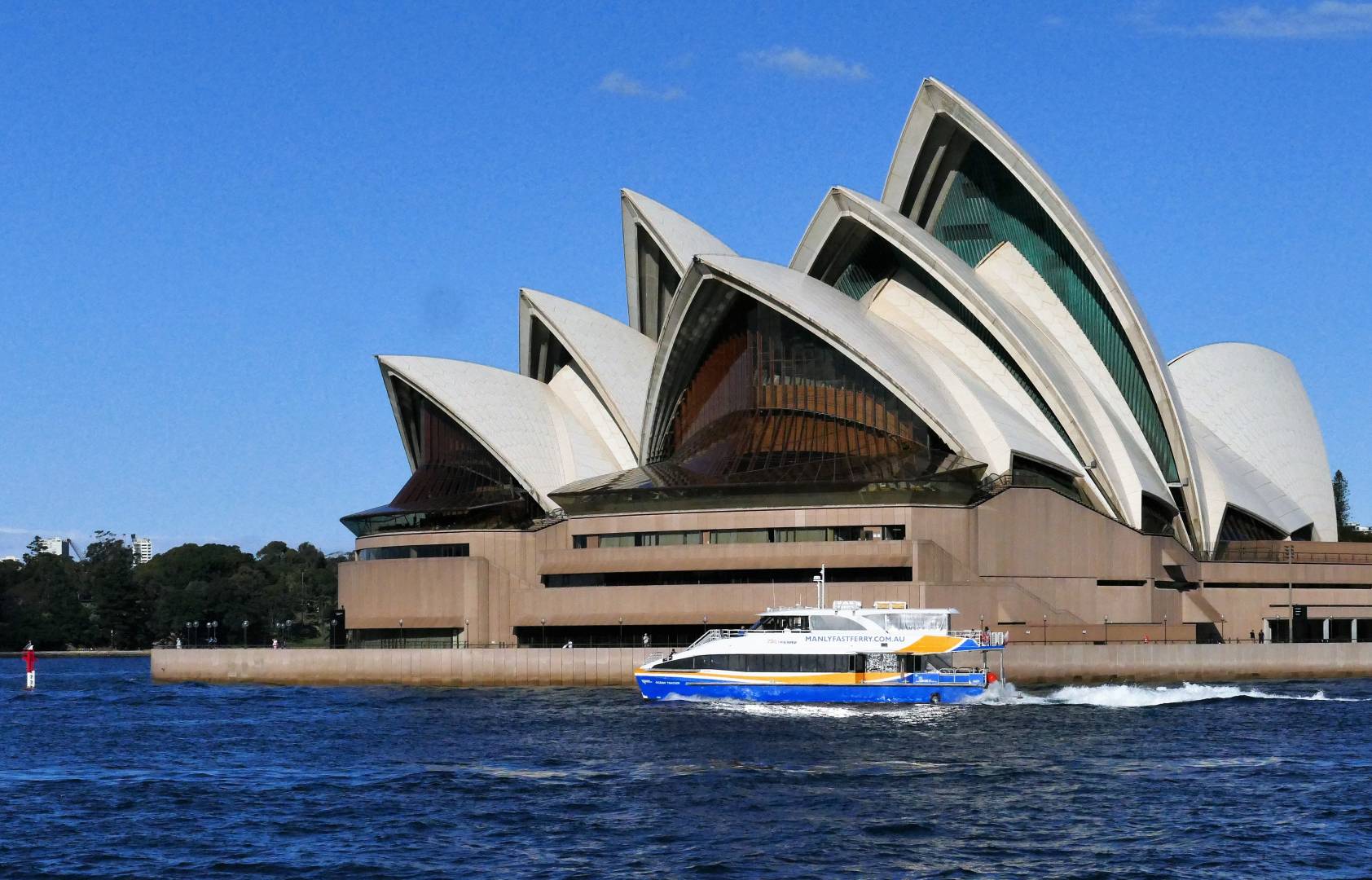
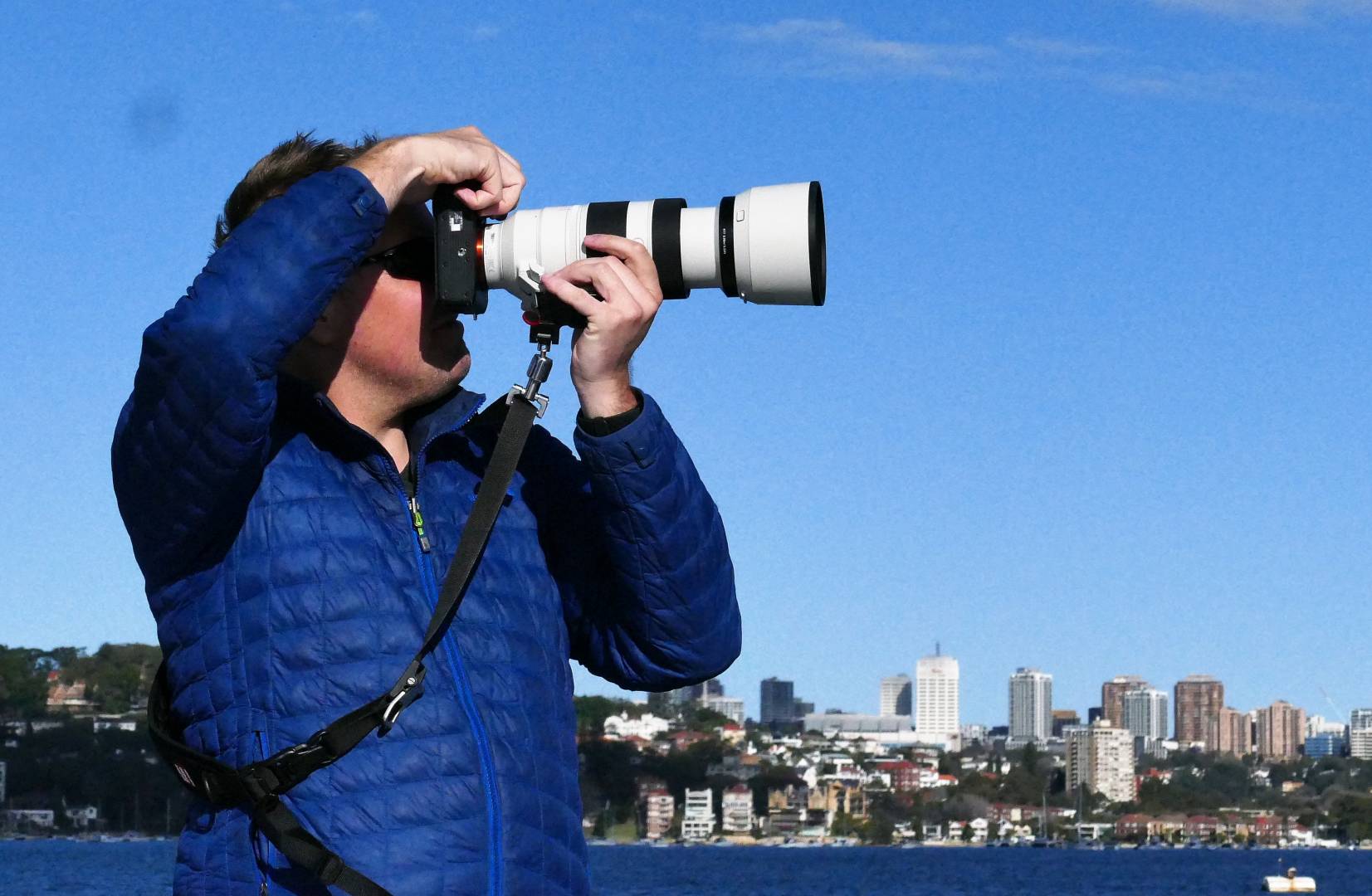
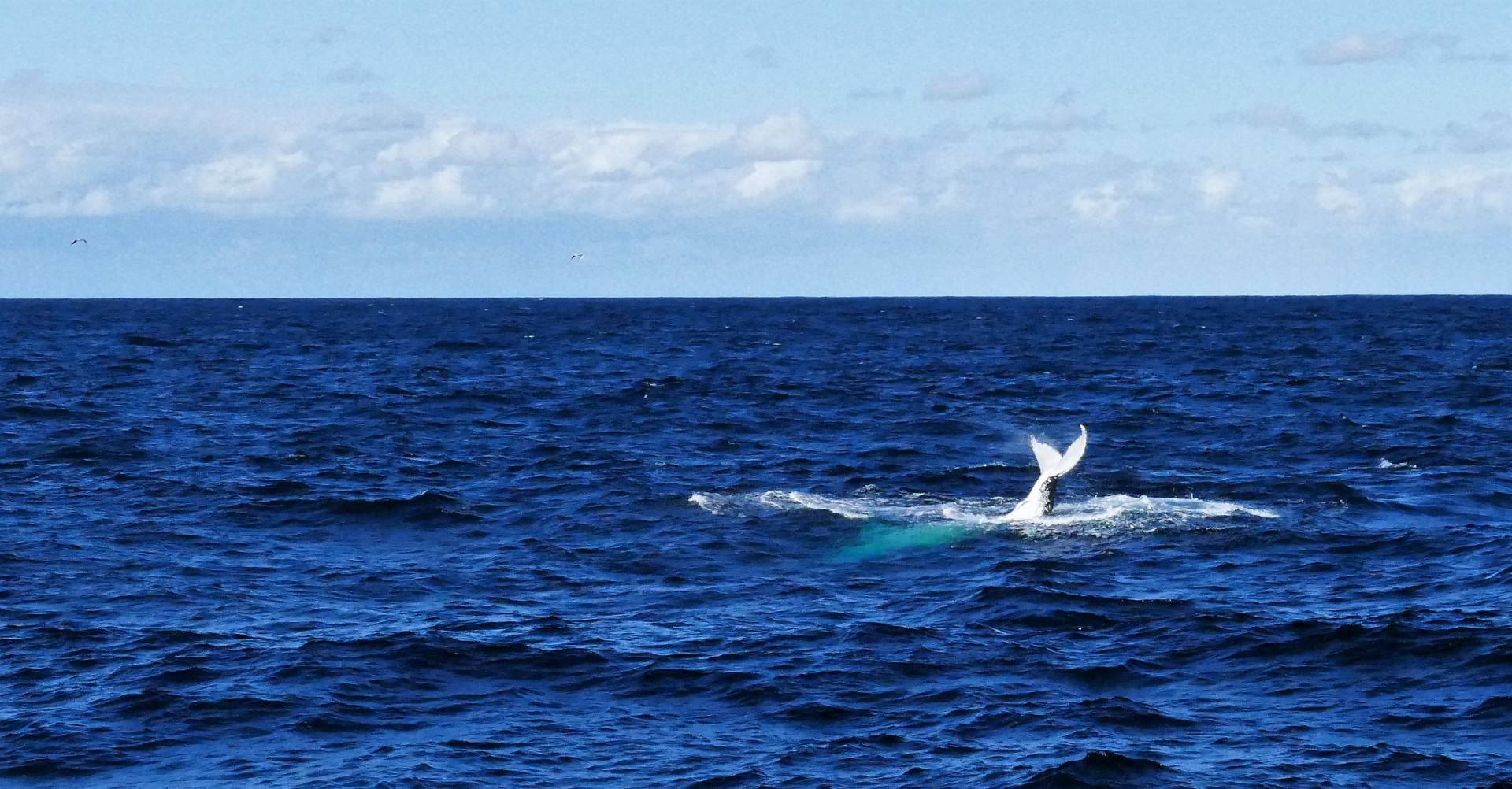
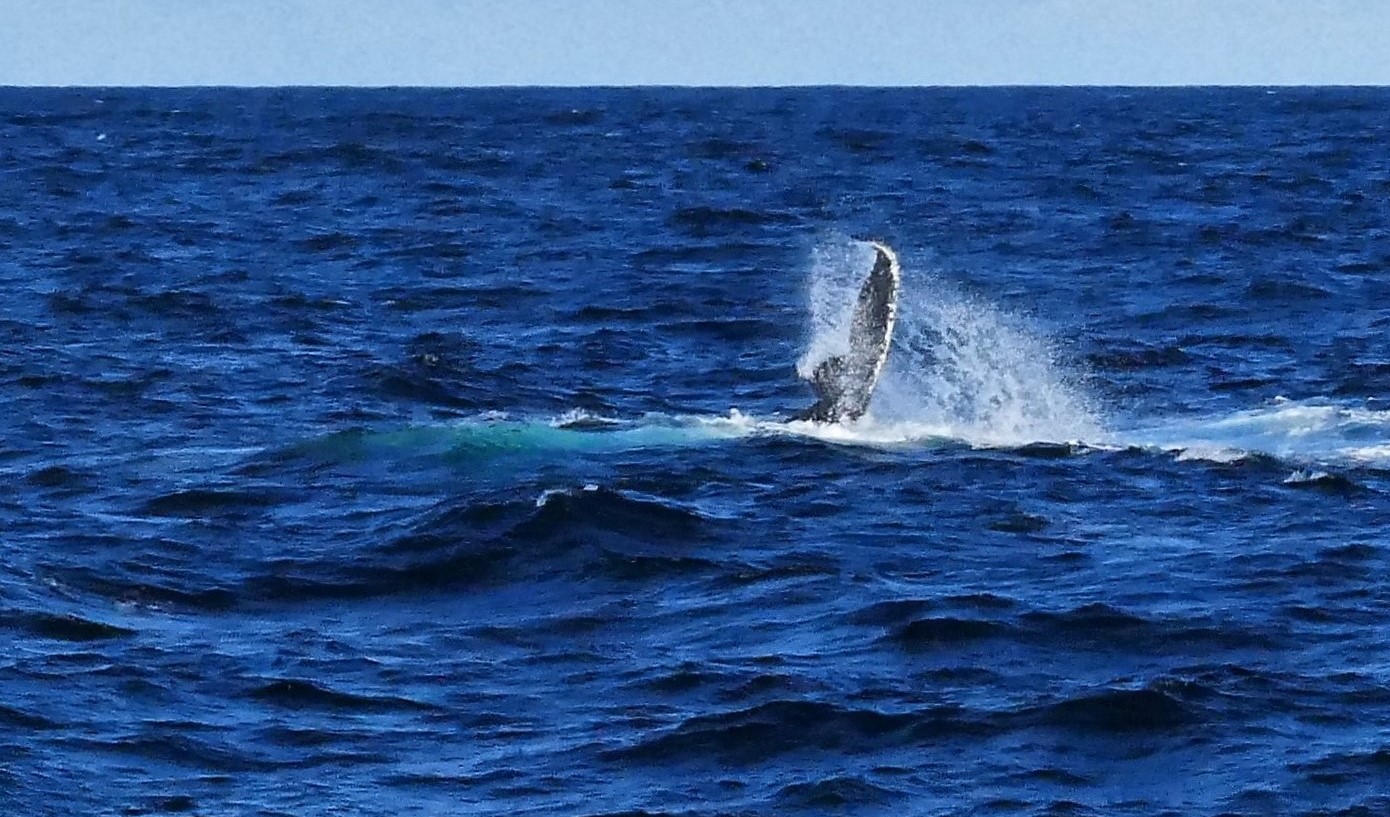
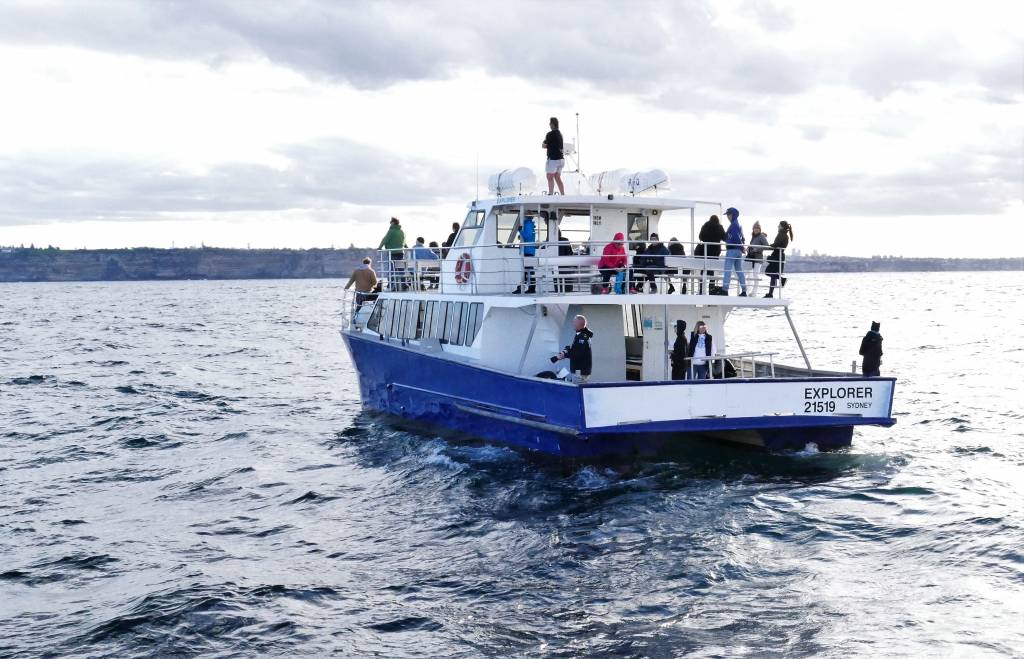


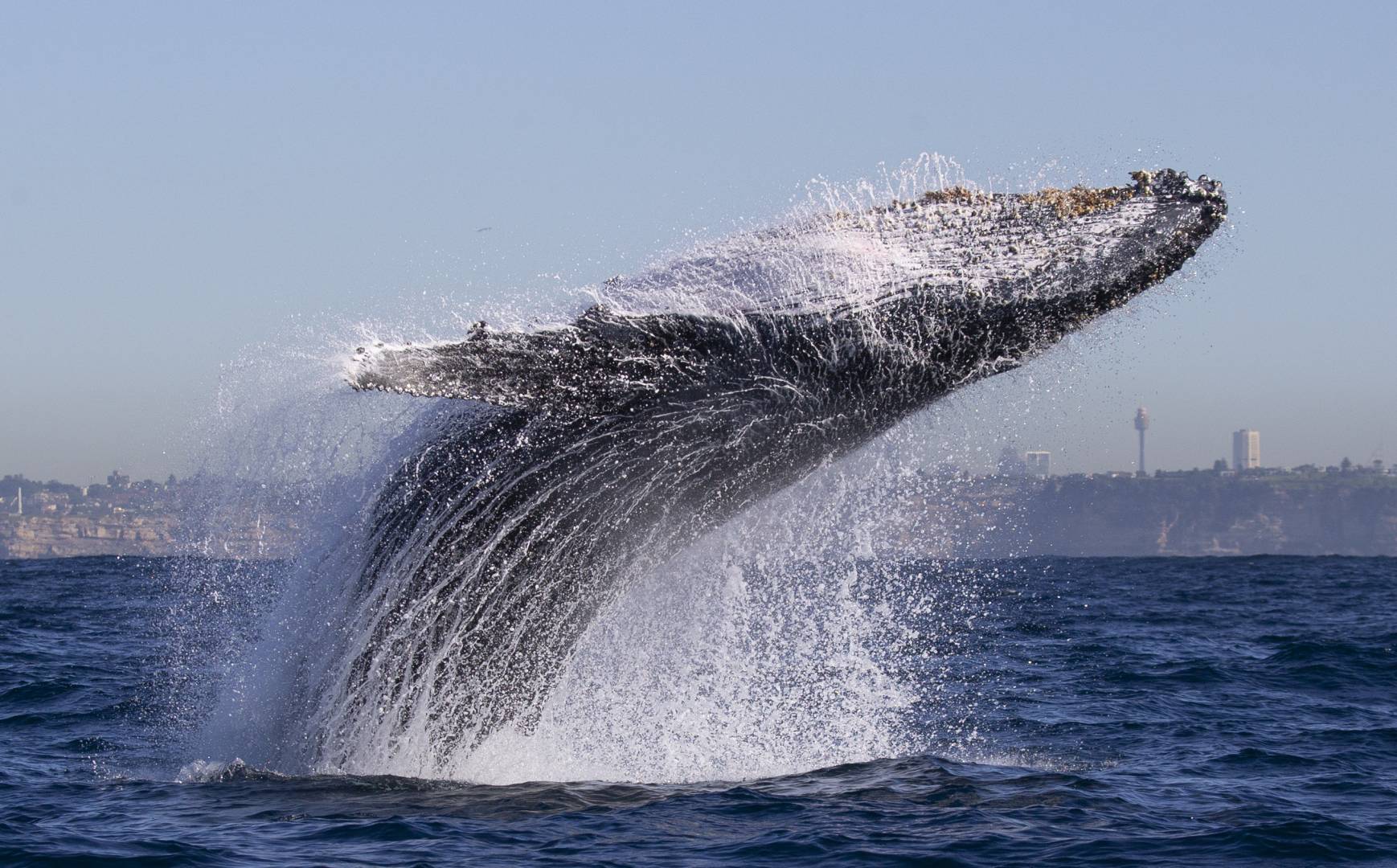
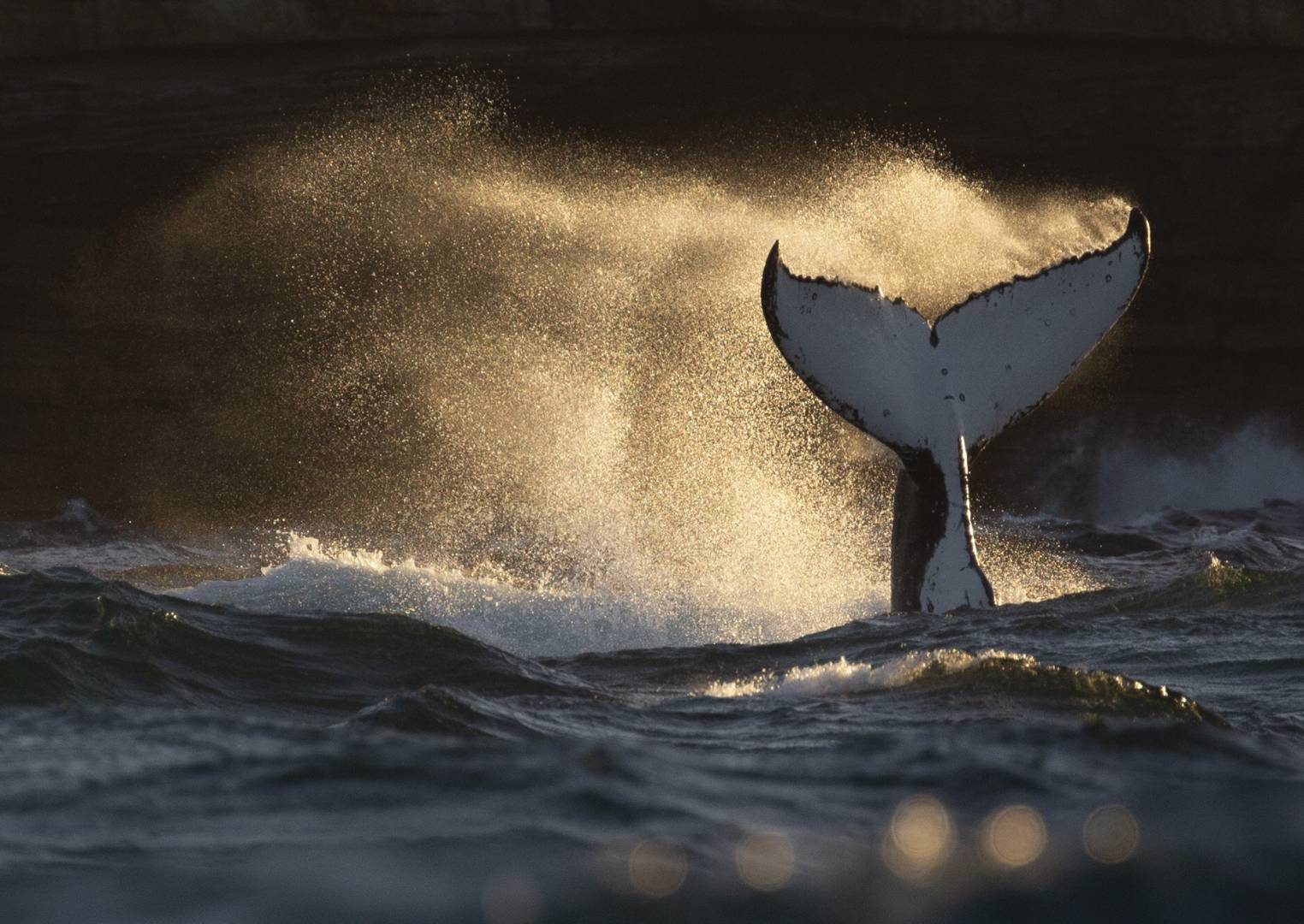
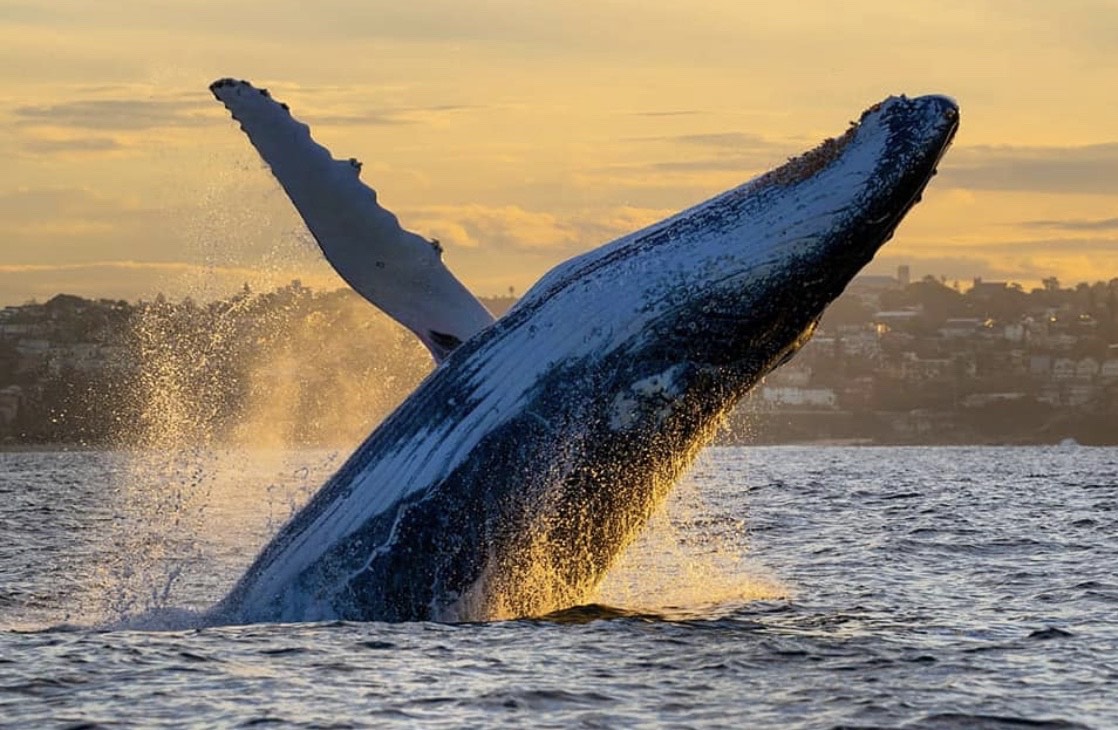

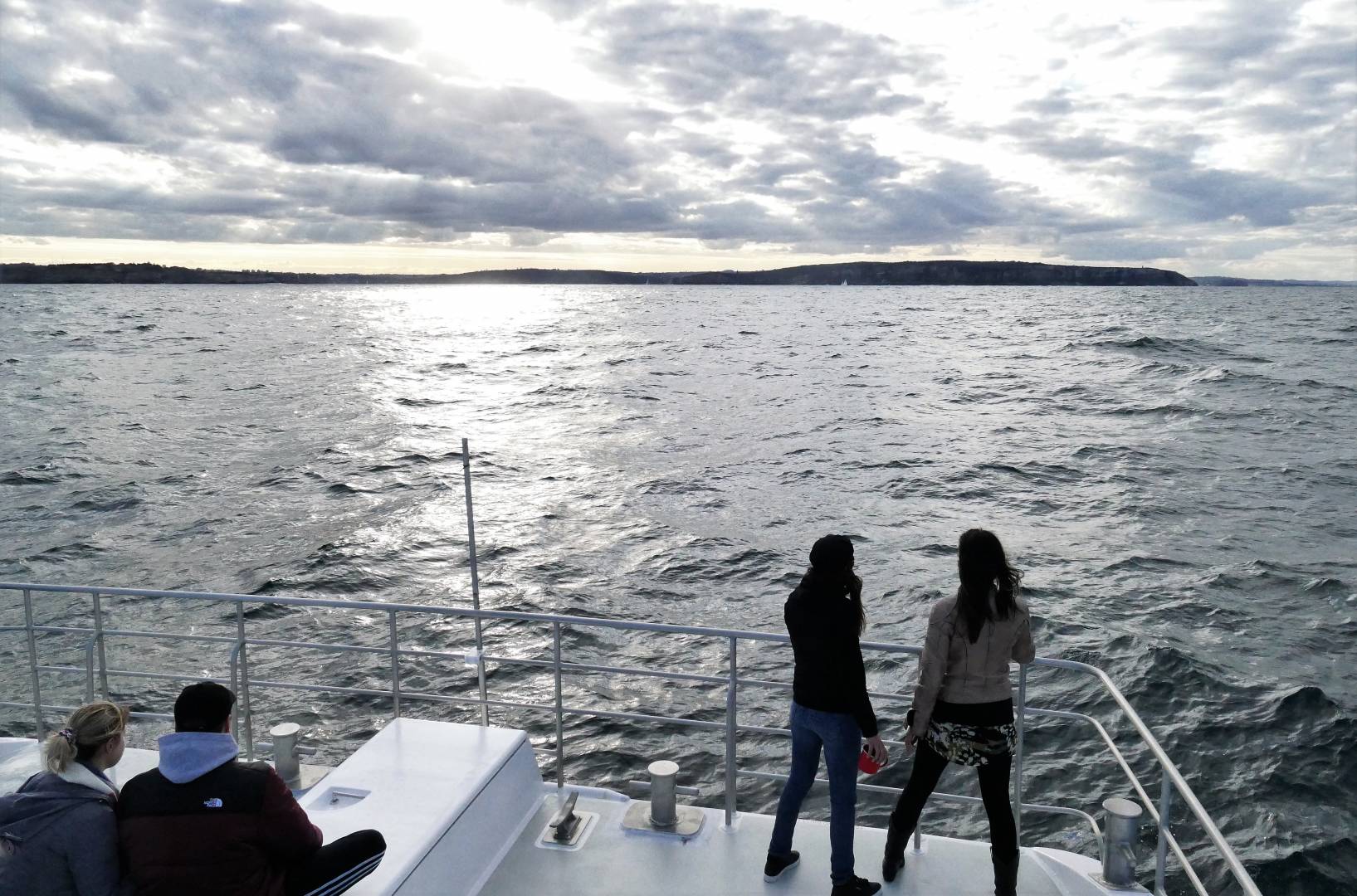
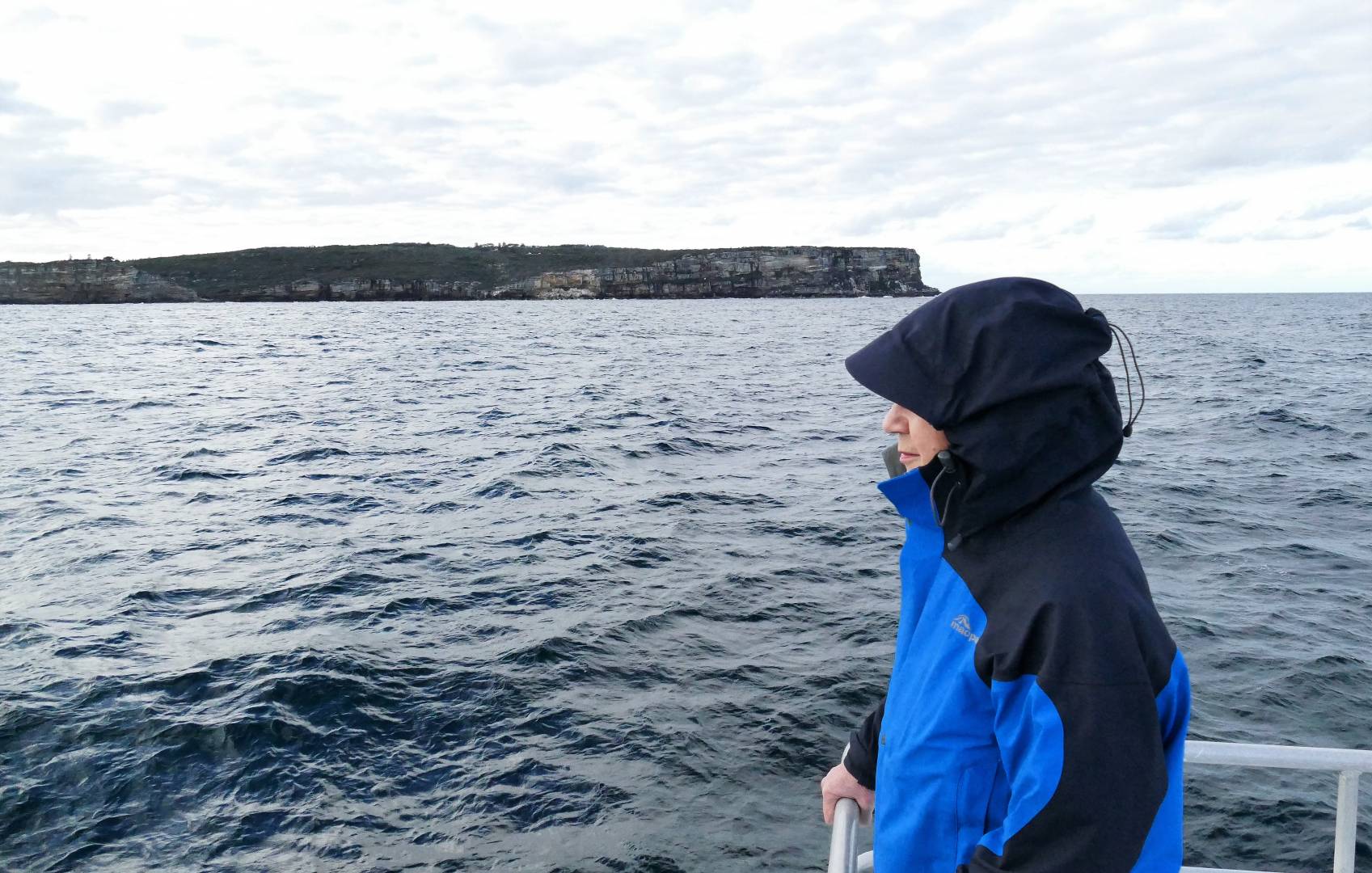




Cheers Jason. Yes, Rachelle is well familiar and incredibly fast using the Canon gear that she loves.
She does admit that seasick tablets are part of her camera kit.
And with her new 1DXii the original 1DX has become her backup camera.
So, what’s happened to her earlier backup, a Canon 5D iv? She did suggest that I try using it, but I decided that a little brick just wasn’t for me. So it has gone to another pro whale photographer……he needed one after he dropped his into the Pacific Ocean! While that event would have been painful, he could take some consolation that it wasn’t top end Leica kit that he dropped.
A good read, Wayne. Goes without saying that Rachel obviously knows the subject and her gear inside out.
Personally, It wouldn’t have mattered which camera I had with me. I’d almost certainly have spent the entire time in a foetal position, feeling extremely unwell and wanting to return to terra firma!
Yes Kevin, well noticed re the backgrounds in some of her shots. As I hinted in the article, the whale watching company that she is associated with have ways and means of knowing where to be, and when to be there. They aim to give the folks on their boats the best possible chance of seeing the whales being playful.
It seems there is a parallel with street photography in that Rachelle frequently visits the same place and waits until the locals do something interesting.
Hello Kevin.
Quite correct. The whales didn’t put on a spectacular show for us on the day we were out there. Interestingly, the following day they were fully breaching and Rachelle got some great shots.
For those of us old enough, or corny enough to remember, it’s the Forrest Gump rule “Whale photography is like a box of chocolates, you never know what you’re going to get”.
And that day later was the day my camera repair guy went out as well. He said it wasn’t easy but he caught a couple of images that he was happy with. I’ll see them when sometime. I take my V Lux 114 in to get the sensor cleaned.
Hi Wayne, thanks for this most enjoyable article. It reminds me of our whale watching trip in Canada when I was amazed at how the tails passed through the water without leaving a trace – like a hot knife through butter. Although my reading of your trip was of a long journey without a great performance by the whales it fits with the mantra ‘ a bad day’s whale watching is better than a good day in the office’.
Hi Wayne, thanks for a most enjoyable article. It reminded me of our whale watching trip in Canada when I was amazed by the way the tails passed into the water without leaving a trace, like a hot knife through butter. I seemed like a long trip out to sea for only a few sights of the tails but as is said ‘a bad day’s whale watching is better than a good day in the office’.
Some great images Wayne. You should put the sony RX 10 Mk 4 on your Christmas wishlist. A local photographer I know uses it to capture dragonflies in flight and from what the images I saw it works “very whale” and seems to be superfast. I know I’ll never venture on the whale terrain and will look at other photographers’ images or filmmakers probably better equipped than I am. Enjoy the weekend
Jean
Hello Jean. An interesting suggestion re the Sony RX10iv. It is a newer camera than the V Lux 114 but shares many details of specifications. I have wondered previously how the RX10iv might compare to the V Lux 114 in handling and use. But that “red dot” has kept me irrationally attached to the Leica.
Actually, that day on the water taught me how important it is for gear to be fit for purpose. But much more important than gear is the ability of the photographer (for whales, and probably dragonflies as well!).
I’ve never been a Sony guy and only buy Leicas and Ricohs. If you look for AF speed the Sony seems to be an excellent option from what I saw. I don’t know if you have a possibility in Australia to try the gear before buying them, something I always do before either on free or paying loan before investing in a new camera.
Enjoy Sunday evening
Jean
Great photos Wayne. I went on a whale watching trip in South Africa about 10 years ago and got nothing like these. There are now great opportunities for photographing whales off the South West Coast of Ireland. Example here https://www.youtube.com/watch?v=Abco79InYYk .
William
Thank you William for the youtube link. Quite instructive to consider in the light of what Rachelle has told me i.e. a method for catching images is to watch how a whale dives. The nature of the dive gives an indication of how deep, how long underwater, and suggests where the whale might resurface. Then be ready with a fast autofocus because you only have a second to capture the image when the whale breaches. A fast burst mode helps.
What gear did you use 10 years ago in South Africa?
I had a Nikon D 700 with a 70-300 lens. I may also have had a LUMIX compact with me as well. At that time I also had Leica Ms 8 and 9 , but neither were suitable for use in visiting Kruger National Wildlife Park which was a major part of our trip. Horses for courses etc.
William
The shot of the whale breaching in the sunset is quite something! That’s the kind of beautiful image that makes me want to grab a camera and get out there. Fantastic work! I hadn’t thought of whale watching before as i thought of it as a horribly touristy thing..these photos have changed my mind. Next time i get a chance I’m going for it.
Hi Stephen. Rachelle says that they get a lot of serious photographers out there on the boats, all hoping for a money shot, then realizing how lucky you have to be to get one. They even get boat loads full of camera clubs.
She says that the funny ones are those who sit with their backs to the water and their smartphones lifted in selfie mode, waiting for a shot as a whale appears out there somewhere. Apparently they would have a greater chance if they simply bought lottery tickets.
What can I say Wayne, your Daughter-in-law certainly knows how to capture fantastic images of those magnificent animals. Those close up images are just magical, and the light enhances that feel.
Perhaps you could have gone on the lower deck and tinkered with the V-Lux – No idea what you would have, or may have captured, but it would have been a worthy experiment. Even if the results didn’t pay off – accepted my lack of appreciation for using a V-Lux, I have not seen one in really life, but I have read reviews. So my knowledge is limited. I also accept the smaller sensor, and being at the long end would have presented you with a few challenges to say the least.
And finally – I liked this article, as the opening led to a glorious series of images and a story, that says to me that you should pick your tool for a job wisely.
You should convince your daughter in law to write the odd article for the Macfilosians. (is that what we are now Mike?)
Enjoy the long weekend guys.
Dave
Gday Dave. I fully agree about the light in the sundet shots. And wonder whether some of its magic comes from reflections off the water as well.
As for comparing the Leica V Lux 114 with Rachelle’s top end Canon kit? Well I know Sean Connery and many others have advised “Never bring a knife to a gunfight”. Now I know what they mean. I’m sure that some of your “hotel guests” would be well aware of it. It was an instructive lesson for me.
Makes you realize we are bit players on this planet! Tell her wonderful photos, that 1DX is superb equip, and all you have do is wipe it off and it keeps on ticking!!going to Instagram now to enjoy her pics.
Hello John. Yes, Rachelle really likes the Canon 1DX. But as of a week ago it has become her back-up camera. Our son has given her a 1DXii for her birthday. She loves it even more, saying that it is a significant step up from even the original 1DX, especially so with regard to the autofocus which is now ultra lightning fast.
But, the weight of a 1DX + Canon 100-400 lens approaches 3 kilograms. So I’m not thinking of heading in that direction, although I’d probably appreciate the excellent weather proofing to protect from my sweaty brow just carrying it.